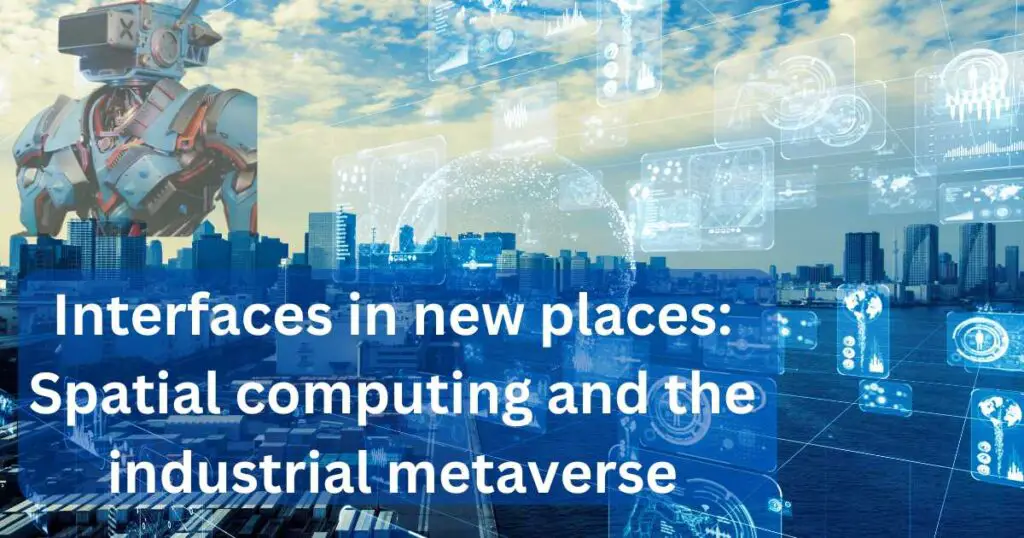Interfaces in new places: Spatial computing and the industrial metaverse
Spatial computing and the industrial metaverse are rapidly revolutionizing the way we approach and interact with technology. Striding beyond the bounds of traditional computing, these exciting concepts promise to usher in an immersive digital experience that merges physical and virtual worlds. By transforming the notion of confined screen-based interfaces to a dynamic environment involving real-world spaces, spatial computing and industrial metaverse are attracting immense interest from businesses and developers alike.

The Emergence of Spatial Computing and Industrial Metaverse
Spatial computing harnesses breakthrough technologies like augmented reality (AR), virtual reality (VR), and internet of things (IoT) to create interactive digital spaces that adapt to and function within our real surroundings. It seamlessly mingles digital content with the physical environment, enabling users to interact digitally with various real-world objects.
Along similar lines, the industrial metaverse, influenced by Neal Stephenson’s 1992 sci-fi novel “Snow Crash“, suggests a virtual reality space where users can interact with a computer-generated environment and other users. It is seen as the future interface for spatial computing where businesses can create, operate, and evolve their own digital twins – connecting people, processes, and objects in an immersive environment.
The Intersection and Impact
Spatial computing’s rise coinciding with the advent of the industrial metaverse is expected to foster a next-generation computing era. A recent report by ABI research, “The New Reality: Spatial Computing and Industrial Metaverse,” suggests that enterprises will spend nearly $10.7 billion on spatial computing solutions, including AR/VR, by 2026. To put it into perspective, spatial computing is about to disrupt every facet of human-machine interaction on a global scale.
The industrial metaverse, combined with spatial computing, can potentially reshape productivity arenas in manufacturing, logistics, retail, and health sectors. Visualizing data in a shared, collaborative environment will offer better insights and decision-making capabilities. Likewise, it will also open doors for robust training sessions, with employees or teams operating in the same digital workspace from different geographical locations.
The Advent of Metaversal Interfaces
On a broader spectrum, the evolution of spatial computing and industrial metaverse is gradually shifting interfaces from 2D to 3D, replacing rectangles of screens with a “metaversal interface”. This describes a 3D interface that reacts to human gestures and movements. For instance, Facebook’s Horizon Workrooms facilitates virtual meetings with avatar representations, marking a significant shift from conventional video conferencing.
Potential Challenges and Future Outlook
Adopting spatial computing for industrial usage brings forth challenges such as interoperability, security, and integration with existing systems. However, technology giants like Microsoft, with its HoloLens – a mixed reality smart-glass, are assisting in overcoming the technical obstacles, thereby revolutionizing the human-computer interaction realm.
While the technologies are still budding, use cases across industries provide a glimpse into a future where working in a physical or digital world becomes indistinguishable. As spatial computing and the industrial metaverse continue to evolve, they will reshape the conventional landscape of human-computer interaction, heralding a new era in digital computing. Much like the transition from mobile to immersive computing, it won’t be sudden but a gradual, transformative process, where the arcane becomes the everyday.
It’s clear that the face of computing is changing. Indeed, the blend of spatial computing and the industrial metaverse is the harbinger of a future where our physical and digital realms are no longer separate, but an integrated, interactive singularity. And this, no doubt, is just the beginning.

